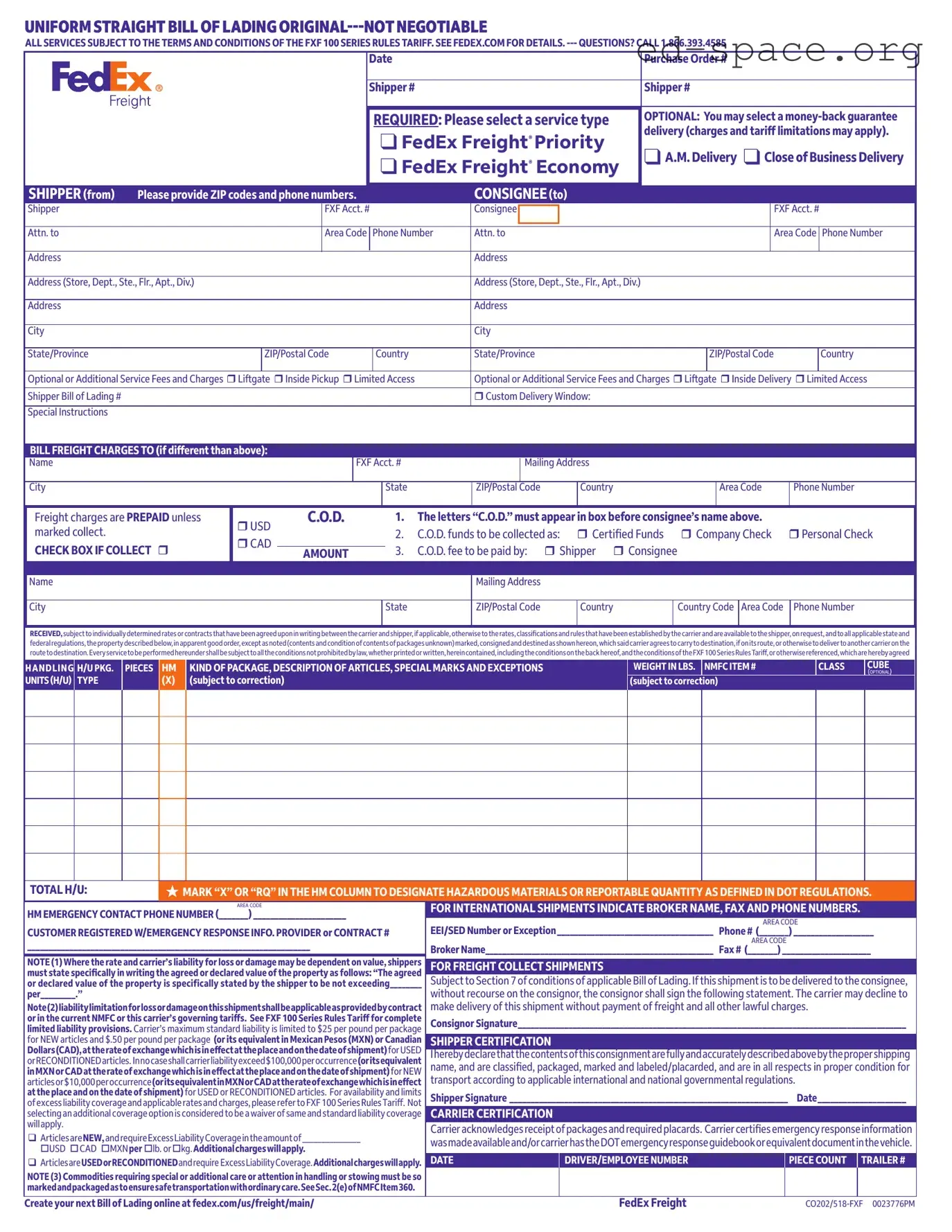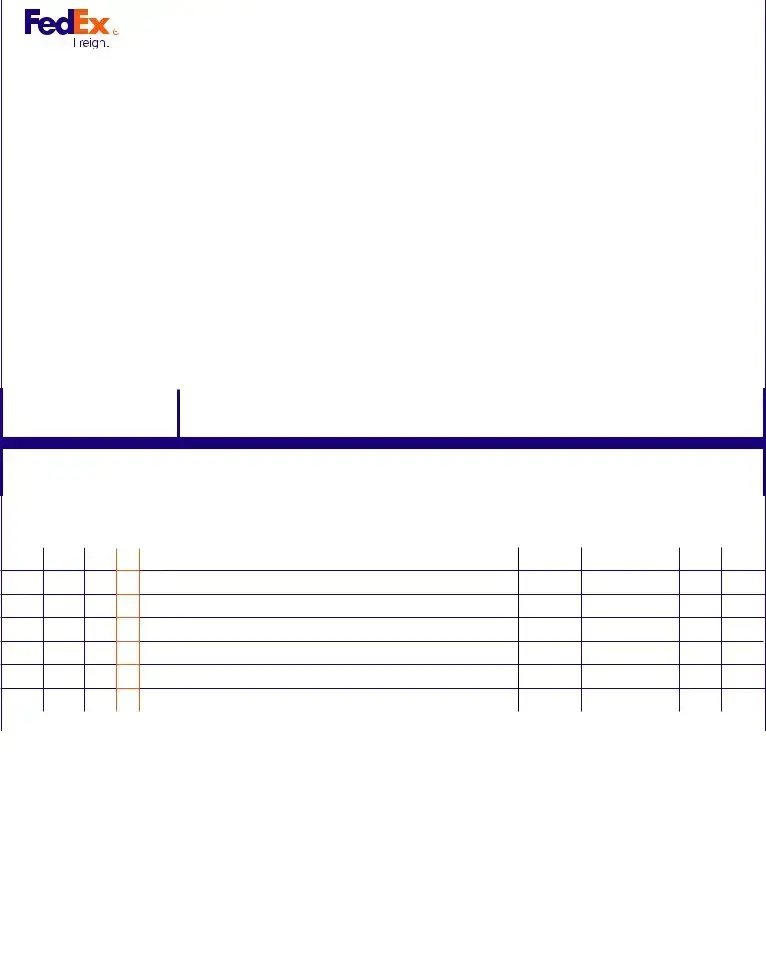What is a FedEx Bill Of Lading form and why do I need it?
A FedEx Bill Of Lading form is a legal document issued by a carrier to a shipper, detailing the type, quantity, and destination of the goods being carried. This document serves as a shipment receipt when the carrier delivers the goods at a predetermined destination. It is crucial because it serves as evidence of the contract of carriage, contains the terms and conditions of the carriage, and acts as a document of title that can be used to claim the goods. For businesses and individuals shipping goods via FedEx, this form is necessary to ensure the proper handling, delivery, and invoicing of their shipments.
How can I select a service type on the FedEx Bill Of Lading form?
When filling out the FedEx Bill Of Lading form, you are required to select a service type for your shipment. This involves choosing between FedEx Freight® Priority for faster delivery or FedEx Freight® Economy for less urgent shipments. Both come with their own set of charges and tariff limitations. You can also opt for additional services such as A.M. Delivery or Close of Business Delivery by ticking the appropriate boxes under the service type selection. The choice should depend on your budget and how quickly you need the shipment to arrive.
What are "Optional or Additional Service Fees and Charges" on the form?
Optional or Additional Service Fees and Charges refer to extra services that go beyond the standard shipping process and incur additional costs. These services include options like Liftgate, Inside Pickup/Delivery, and Limited Access. Each of these services caters to specific needs, such as the need for special handling equipment (Liftgate), delivery inside a premises (Inside Pickup/Delivery), or delivery to areas with limited accessibility. Selecting any of these services on your bill of lading will ensure that your shipment receives the necessary attention but will add to the overall cost of shipping.
How do I indicate that my shipment contains hazardous materials on the FedEx Bill Of Lading form?
To indicate that your shipment contains hazardous materials, you should mark an "X" or "RQ" in the HM (Hazardous Materials) column next to the item description on the FedEx Bill Of Lading form. This informs FedEx that the shipment must be handled according to specific regulations governing the transport of hazardous materials. Additionally, you must provide an emergency contact phone number, and if available, the EEI/SED Number or Exception. For international shipments, broker details must also be included. Properly marking hazardous materials is crucial for ensuring the safety and compliance of your shipment.
What does the "Shipper Certification" section entail?
The "Shipper Certification" section of the FedEx Bill Of Lading form is a declaration by the shipper that the contents of the consignment are fully and accurately described in the document, classified, packaged, marked, and labeled/placarded according to the relevant regulations for safe transport. By signing this section, the shipper confirms compliance with all shipping regulations, both international and national. It's a crucial step in the shipping process, as it ensures that the carrier is fully informed about the contents of the shipment and that it is prepared and packed safely, mitigating risks during transportation.

